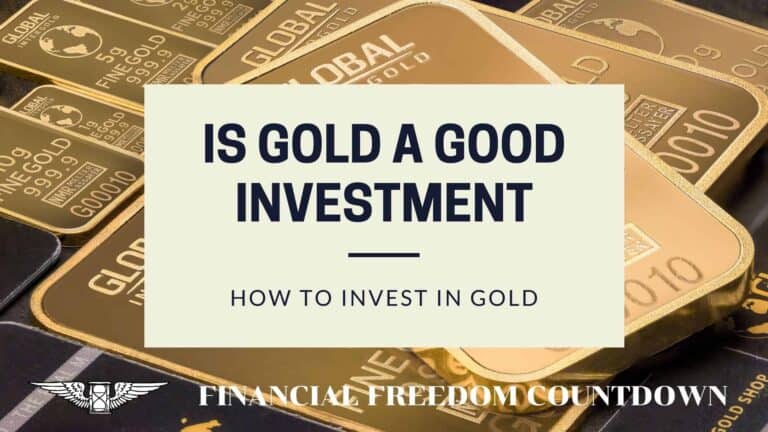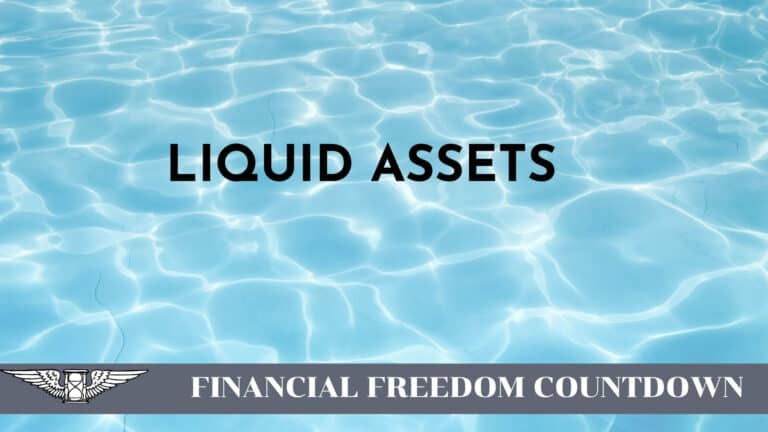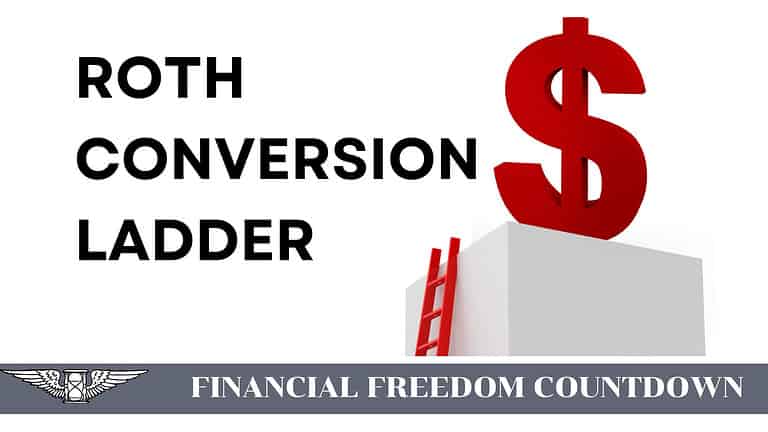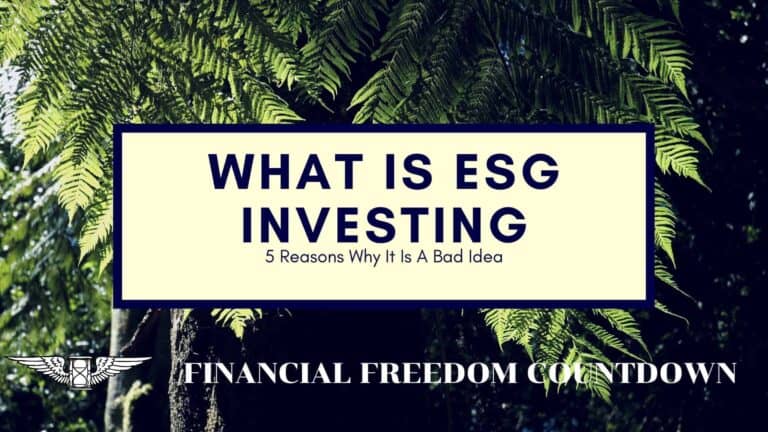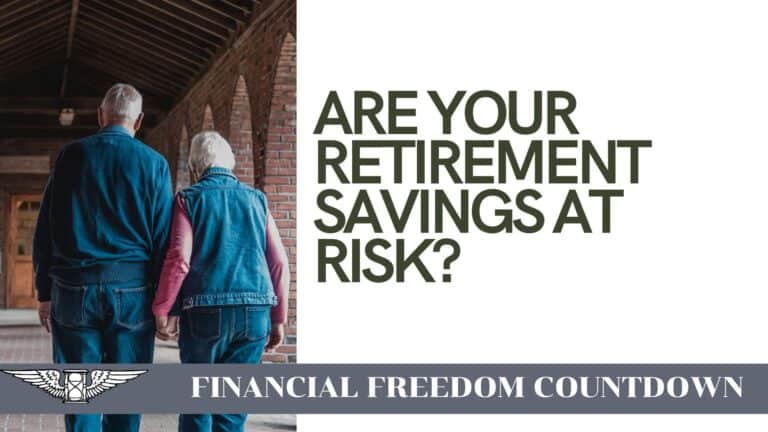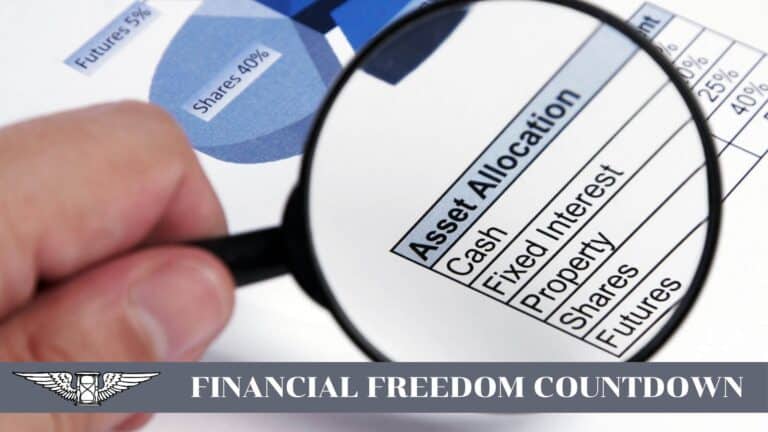Ultimate Guide to NFTs: How To Buy, Sell or Create NFTs
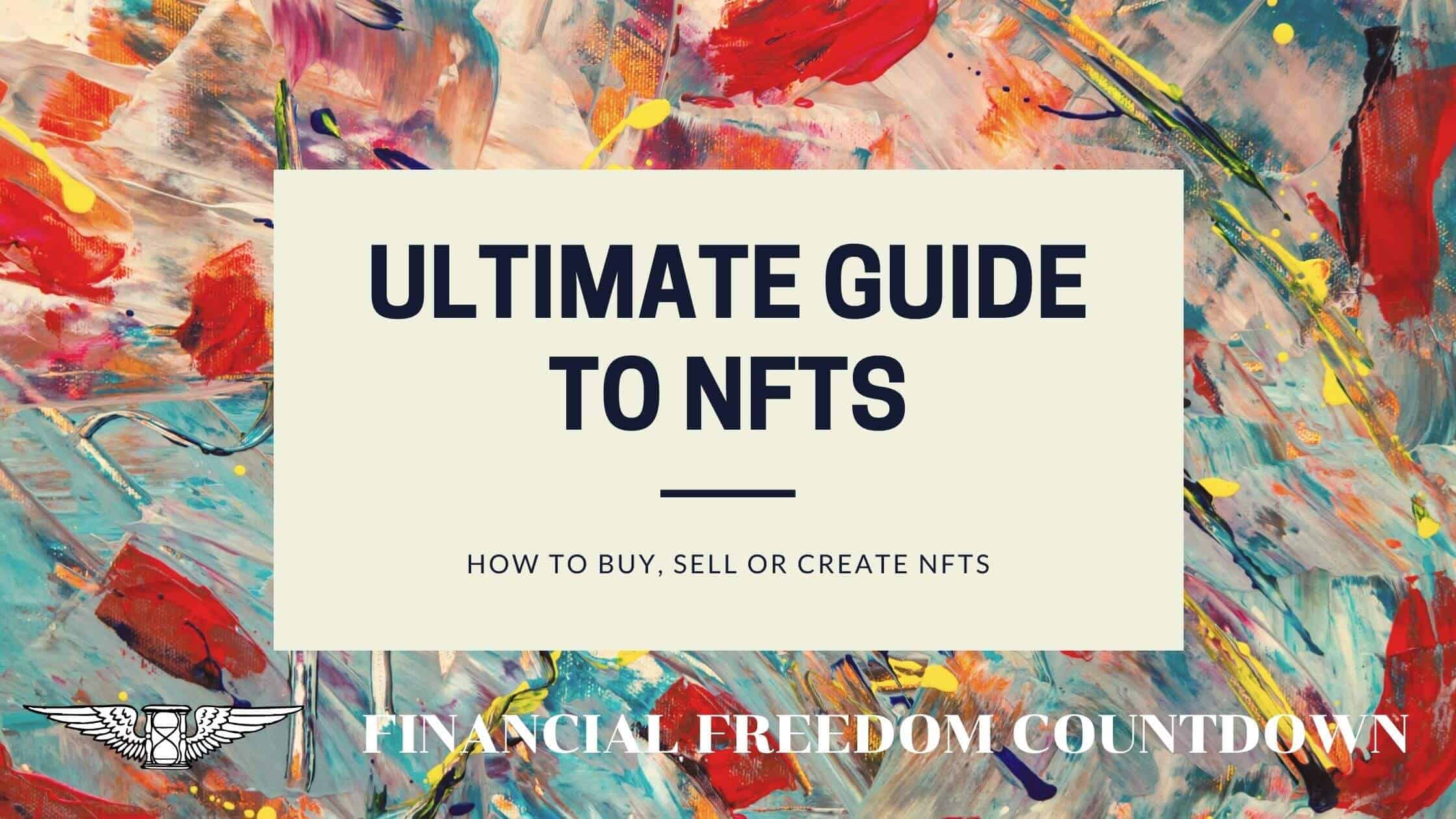
Cryptocurrencies have been in existence for over a decade, but it is such a rapidly evolving space. You might be comfortable investing in cryptocurrency IRAs, but you probably feel a little left out of the NFT craze like most people. You’ve heard about Bitcoin and Ethereum, but what are Nonfungible Tokens (NFTs), and how do they work? Why are people paying millions for some NFTs, and how to buy, sell or create an NFT? Let us answer all these questions and more.
What Are NFTs?
A nonfungible token (NFT) is a unique data unit stored on a blockchain and cannot be interchanged. One can make any digital files such as images, tweets, videos, or audio into an NFT.
NFTs are most popular with digital art, sports collectibles, game tokens, and even memorable tweets. A nonfungible token is not something you hold in your hands or frame to put on your wall. They exist on the blockchain and can be stored in a digital ledger or an online cryptocurrency wallet.
NFTs provide a public certificate of authenticity demonstrating that you own the underlying digital file. Critics of NFTs claim that it is easy for someone to save the file, and it is hard for you to have legal recourse.
But the argument has no merit. Investing in art is a multi-billion dollar industry. The original copy of the Mona Lisa might be in Paris, but anyone could make a copy for their home as well. Physical art doesn’t perform better than digital artwork in reducing duplicates.
NFTs provide a more robust way to verify ownership within a closed ecosystem. For example, in a video game, you can purchase an NFT in the form of a magic sword. Your NFT collections can be validated within the game, so if you bought it, everyone in the game knows you own it and can use it.
Of course, anyone can validate the nonfungible nature of tokens in the digital economy, but we are still in the early stages of exploring this unique asset class. Traditional auction houses like Christie’s and Sotheby’s now recognize digital artwork. Digital artist Beeple sold the first purely digital artwork at Christie’s for $69 million.
What Is the Difference Between NFT and Cryptocurrency?
The main difference between NFT and cryptocurrency is that NFTs are nonfungible while currencies are fungible. NFTs are nonfungible because each NFT is unique.
In some ways, nonfungible tokens are like cryptocurrencies, like Bitcoin and Ethereum, because they exist on a blockchain. Except that an NFT is unique. It is necessary to understand the difference between fungible and nonfungible.
NFTs are created on blockchains such as Bitcoin, Ethereum, or other Layer 1 blockchains.
Remember, Ethereum blockchain is different from Ethereum token, also known as Ether. If you consider bitcoin or Ether as a currency, each bitcoin is similar to a dollar bill. Dollar bills are indistinguishable from each other, and you can easily swap one-dollar bill for another. The value of a one-dollar bill is the same as the value of another dollar bill. Similarly, each bitcoin is precisely similar to another bitcoin’s worth and is considered fungible.
On the other hand, NFTs are nonfungible because each NFT is unique, like a piece of art or an individual tweet. Because each token is uniquely identifiable, NFTs differ from blockchain cryptocurrencies, such as Bitcoin.
One can turn almost anything digital into an NFT. What makes it unique is that the digital file is stored as an NFT with individual data that identifies the original piece of work. It can be art, music, photographs, videos, and more. It can even be a tweet from a famous person or a piece of computer code.
The NFT can hold value like any other collectible. The difference is that I wouldn’t go to an art gallery to buy an original painting. I would go to an NFT marketplace, browse, and then buy a unique piece of art in the form of an NFT. Buying an NFT is not like purchasing a physical piece of art to hang in my house. I will buy a file with the NFT that also contains the proof that I own the original copy of the artwork.
Examples of Nonfungible Tokens (NFTs)
Anyone can create a nonfungible token. I can make a piece of digital art or take photographs and turn them into a unique NFT. The more famous a person is, the more popular their unique NFT will most likely be. There is a wide range of NFTs today from famous people and those that are not famous but could be famous someday. It is somewhat like buying an original Picasso before anyone knew who Picasso was.
Some examples of nonfungible tokens include:
- William Shatner recently released a collection of his personal memorabilia in the form of NFTs. These nonfungible tokens include early photos during his career and a picture of him hugging co-star Leonard Nimoy, who played Mr. Spock on Star Trek.
- Singer-songwriter Grimes WarNymph sold a collection of ten NFTs for $5.8 million, including a unique video titled “Death of the Old,” that sold for $389,000.
- The National Basketball Association has an NFT marketplace. Buyers and sellers can go to TopShot and find videos of NBA moments in the form of an NFT. The highest-priced basketball NFT is a video of LeBron James dunking during a game against the Houston Rockets.
- Taco Bell became one of the first major corporations to sell NFTs for brand awareness. They sold a series of GIFs based on items from their menu and sold them as NFTs. These nonfungible tokens sold out in minutes to give you an idea of the popularity of some NFTs.
- Nonfungible tokens are also popular with online game players. Virtual sneakers from RTFKT, made for online gaming avatars, have sold for as much as $10,000 a pair.
- Jack Dorsey, the CEO of Twitter, turned his first tweet on Twitter from the day it launched in 2006 into an NFT. This one nonfungible token sold for almost $3 million, which he donated to charity.
These NFT examples show the wide-ranging possibilities for nonfungible tokens. There have been some NFTs that have sold for some incredible prices. Some of these examples include:
- Pak is a well-known digital artist who holds the record for the highest price paid for an NFT. His artwork titled “The Merge” sold for an astounding $91.8 million. “The Merge” is not a static piece of art; it is a collection of masses that individuals could buy. The more people spent, the larger their group became. All of these masses are then lumped under this same creation. All sales totaled $91.8 million.
- Beeple is another well-known digital artist who has created digital art every day since May 2007. Christie’s auctioned off these works for $69 million.
- CryptoPunk #7523 is a digital avatar and one of 10,000 digital creations created by Larva Labs studio. Known as CryptoPunks, this particular one sold for $11.7 million. CryptoPunk #3100 sold for $7.58 million and CryptoPunk #7804 sold for $7.57 million. It is estimated the entire collection is worth $400 million.
- Beeple made a list again with his dystopian art piece titled “Crossroads,” which mocks President Donald Trump. This NFT sold for $6.6 million.
- Larva Labs sold a beautiful NFT artwork titled “Ocean Front” for $6 million. The picture shows a wooden platform in the middle of an ocean with campers and shipping containers atop the platform. The color contrast of this piece is gorgeous.
Beeple also created a unique hybrid type of NFT, titled “Human One.” Unlike other NFTs, it combines digital art with physical form. “Human One” is a human-sized sculpture made out of mahogany wood, polished aluminum, and four video screens with a total resolution of 16k. The video screens display a virtual avatar that will keep changing for years. Beeple said he would keep updating this avatar for as long as he is alive.
How Do NFTs Work?
Nonfungible tokens can be created by anyone and stored on a public blockchain. These blockchains are accessible and open to anyone. Owners and creators can remain anonymous, while the items that the NFT represent are verifiable and traceable.
NFTs are created and minted using smart contracts on the blockchain. The smart contract assigns ownership and manages the transfers of the NFT as they are bought and sold.
There are a few steps involved in the minting process, including creating a new block for validating and recording the data onto the blockchain.
Blockchain technology ensures that the data cannot be hacked, stolen, or tampered with. All information on a blockchain is transmitted to everyone connected to that blockchain and is entirely transparent. If there are any changes, everyone on the blockchain can see the change. If everyone does not agree to the change, it will not be validated.
NFTs are bought and sold through NFT marketplaces, with OpenSea being one of the most popular marketplaces. For example, when I purchase a digital art NFT, I do not get the actual art. I get the NFT with the certificate of ownership of the NFT registered on the blockchain.
The certificate you receive should be kept safe in a digital wallet. There are several types of digital wallets. A cold wallet is the best because it is not connected to the internet and kept on a secure physical device. If the password to the digital wallet is lost where the NFT is stored, the owner of the NFT could lose it forever. So, please do not lose the password, as you will need it to access the NFT or when it comes time to sell it.
How Are NFTs Created?
Before a creator can create an NFT, they must choose the format of their NFT. A creator can determine what type of NFT they make, like photos, text, digital painting, video, or audio files.
In addition, they can create virtual items for online games like weapons, avatars, currency, and even virtual land for use in the Metaverse.
Creators will also decide on the format type they want to save their nonfungible token. Usually, an NFT will be saved as a PNG or a GIF file. If it is text, it will probably be stored as a PDF. A music file will be saved as an MP3, and a video file can be saved as an MP4.
The entire process that goes into creating an NFT is called minting, which refers to turning the digital item into an asset on the blockchain. Once minted, the NFT cannot be changed since items saved on a blockchain cannot be altered or tampered with. Once on the blockchain, it can be sold, resold, and traded.
Specific NFT protocols and technologies allow for commissions to be paid to the original creator whenever the NFT changes ownership. During the minting process, artists can add a royalty clause, so they get a passive income for future sales of the digital work. The specific steps to creating an NFT are:
- It is necessary to set up a digital wallet first.
- Sign onto the NFT marketplace and blockchain, where the NFT will be minted.
- Click on the button that says either “new” or “add” to get started.
- Upload the finished NFT item, give it a name, make sure it is complete and click on create.
Each NFT marketplace will have specific instructions that creators need to follow. Creators have to enter in the best descriptions to attract customers to their NFT and choose whether they want to mint a single nonfungible token or a collection of them. And the creator will decide how they want to sell their NFT. Sellers can sell their NFT at a fixed price, English auction, Dutch auction, or timed auction.
What Are NFTs Used For?
Nonfungible tokens have numerous uses, and more benefits are discovered all of the time. Some uses for NFTs include:
- Collecting: Everyone has been a collector at some point in their life. Collecting coins, baseball cards, books, stamps, license plates, or almost anything else. NFTs, give collectors something else to manage. NFT collectors can collect digital art, music, photos, memes, tweets, computer code, or anything unique. An NFT is guaranteed unique, and when you show it off, it is known that it is one of a kind.
- Gaming: Online games are one of the most popular areas for NFTs. Some online games have a feature that allows exchanging money for game items. Gamers can buy things outside of a game that they can use in that game or for several other online games.
- Digital art: The most popular use of NFTs is digital art. Any creator can create a unique piece of art, mint it as an NFT and sell it. NFTs, give a lot of control to artists over their creations.
- Music and Movies: Like art, creating music or movies and turning them into NFTs gives the creator control over their unique creation. The marketplace gives them a showcase to feature their works to the public and potential buyers.
- Metaverse: The Metaverse is another term for virtual reality. Virtual realities are divided into parcels of land. I can buy these properties as NFTs. Companies have gotten into the act now and sell billboards on these parcels of land to advertise their products. There are several Metaverse crypto tokens now on sale as well. Facebook believes that Metaverse is the next most significant opportunity and rebranded themselves as Meta.
- Investing: Buying an NFT for the sole purpose of selling it at a profit in the future is another use for NFTs.
- Other possible uses for NFTs could be passports. Instead of carrying the ticket and having it stamped everywhere, it can be stored as an NFT on the blockchain.
How To Buy NFTs?
Buying a nonfungible token on an NFT marketplace is not relatively as easy as buying something off of Amazon. The first step to buying NFTs is to get a digital wallet and buy some cryptocurrency like Ethereum to store in the wallet. You can buy Ethereum at any US exchanges such as Coinbase, BinanceUS, and BlockFI.
Cryptocurrency is used when purchasing nonfungible tokens, and in many cases, it is Ethereum. NFTs are also available on other blockchains like Solana, Cardano, Tezos, Flow, Zilliqa, but most of the popular NFTs are on the Ethereum blockchain. After purchasing some Ethereum and transferring it to your digital wallet, the next step is to go to an NFT marketplace and look for something to buy. A few of the most popular NFT marketplaces include:
- OpenSea
- Rarible
- Larva Labs
- NBA Top shot
- Mintable
- Foundation
- Nifty Gateway
- NFT Showroom
- SuperRare
- Axie Marketplace
- VIV3
- BakerySwap
Each NFT marketplace will have its specific instructions. OpenSea is probably the most popular and largest NFT marketplace. Buyers will first have to click on a button that will say something like My Profile and set up a connection to their digital wallet.
Now it is time to start browsing. Prices range from free to NFTs that costs hundreds of thousands of dollars. And for the rarer items, the price could exceed this. Some NFTs are sold using an auction, while other NFTs will list a price and can be purchased immediately.
Even if an NFT is listed as free, there are still fees for each transaction. It can get confusing for anyone new to blockchains and buying NFTs. Each transaction on a blockchain network charges a “gas fee” for the transaction. The gas fee can rise and fall depending on how busy the network is at any given time.
Once you buy an NFT, always transfer it to your crypto wallet so you will always have access to the NFT until you sell it.
The process to buy NFTs is complex, and there are several stories of scammers who will prey on new users. To simplify the process, Coinbase now offers an option to buy NFTs directly on their platform. Mastercard has partnered with Coinbase so users can easily purchase NFTs with Mastercard cards on the Coinbase NFT marketplace.
Deciding What Type of NFT To Buy or Invest In
Some buyers already have an idea of what they are interested in buying. Maybe it’s game pieces, or they’re interested in digital art. Some buyers are just interested in looking for something unique, while others are looking for an investment.
Buying an NFT is usually not something to jump into without a bit of research first. I wouldn’t buy an NFT without first researching similar NFTs and knowing what I am purchasing. When I look for an NFT to invest in, I always follow these rules:
- Use research tools like Rarity Tool and Dune Analytics
- Use online forums to learn and talk to experts
- Always invest in popular and trusted NFTs
- Do not invest money that cannot afford to be lost
These rules are essential when a buyer is looking for the best price and investing in NFTs. There are times when I am just interested in digital art and will browse for something interesting. Either way, the research tools will help me decide.
When investing in an NFT, keep in mind that it is the same as investing in anything else. An item is bought with the expectation that it will rise in value at some point in the future to be sold for a profit.
When I buy the stock of a company, I research it first. I do the same thing when I consider investing in an NFT. I mainly like digital art, so I look for something that appeals to me, and I will research the artists and similar digital artworks. Maybe I will get lucky and buy some digital art from the next Beeple or Larva Labs before becoming famous.
Why Are NFTs Valuable?
NFTs are valuable because they are unique, and their uniqueness can be verified, just like a Picasso is unique and valuable. Even though anyone can make copies of a Picasso painting, there is only one irreplaceable original. The digital code that is saved onto the blockchain with the NFT verifies it is original. Certain factors go into the valuation of a particular NFT like:
- The value of the creator. If the creator of the NFT is well-known and their NFTs are sought after, their NFTs will be valued higher.
- The potential value is what the NFT could be worth in the future. Is the artist an up-and-coming creator, or are they a celebrity just starting to get involved in NFTs.
- The buyer’s perception can raise the value. What is the nonfungible token worth to the buyer will affect the value.
- The market value of similar NFTs or other NFTs created by the same artists will affect the value.
- The community aspect of the NFT is also essential. Bored Ape Yacht Club (BYAC) built an entire community around individuals who own the BYAC NFTs and have exclusive events for the members.
- The value of an NFT is also in its originality. A Picasso painting can be copied and duplicated, but it will never have anywhere near the value of the original Picasso.
Pros of Buying and Selling NFTs
- Nonfungible tokens allow artists to create and sell their unique art forms and you can support the artist by buying their NFT.
- The best thing about using a blockchain for art creators is it gives them more control over their creations and can sell their work without the need of a third party or agent. They don’t need galleries to show their work. Using the NFT marketplace lets them show their creations to far more people.
- Artists can also get a percentage of the sale every time the NFT changes hands and is sold. Currently, an artist does not benefit when a painting is resold. Due to the blockchain, artists can programmatically enforce the percentage of each future sale they will receive when their NFT creation is resold.
- NFTs also make verifying the item’s originality because of blockchain technology. When a buyer buys an NFT, they do not have to worry about purchasing a fake or not.
- When considering the best assets to buy, collectibles do not top the list. However, as an investment, NFTs are pretty different from traditional forms of investments which make them ideal for diversifying a portfolio.
- One can also trade NFTs for another NFT. Buying and trading game pieces or virtual land is common with NFTs.
- At this time, the NFT market is getting bigger every day. More creators, sports leagues, celebrities, and brands are adding their NFTs to the marketplace.
Cons of Buying NFTs
- As an investment, they are illiquid, which means you can’t sell them immediately as more liquid assets can be.
- In addition to illiquidity, they are one of the most speculative types of investment. They can be volatile and can fluctuate in price rapidly.
- Although NFTs are a new asset class, they should be considered as collectibles and not stored in a retirement account as per IRS guidance on collectibles. Always consult a qualified professional for tax advice.
Final Thoughts on Nonfungible Tokens (NFTs)
NFTs have been around for a while and have recently become more popular with the rise of cryptocurrency. NFTs can be bought and sold as collectibles, as an investment, used to raise money, used in games, and used for advertising to increase brand awareness.
But are they popular with everyone or just a minor segment of the population? Are NFTs here to stay, or are they the next fad like Cabbage Patch dolls that will fade with time? That is the question many have.
Caution is advised with any new asset class, especially related to cryptocurrency.
It is prudent not to invest your entire life savings in NFTs. But if someone likes and buys an item or digital art and the price drops, they will always have the digital art to enjoy.
Readers, have you considered buying an NFT? Would this new asset take a large chunk of the traditional art market?

John Dealbreuin came from a third world country to the US with only $1,000 not knowing anyone; guided by an immigrant dream. In 12 years, he achieved his retirement number.
He started Financial Freedom Countdown to help everyone think differently about their financial challenges and live their best lives. John resides in the San Francisco Bay Area enjoying nature trails and weight training.
Here are his recommended tools
Personal Capital: This is a free tool John uses to track his net worth on a regular basis and as a retirement planner. It also alerts him wrt hidden fees and has a budget tracker included.
Platforms like Yieldstreet provide investment options in art, legal, real estate, structured notes, venture capital, etc. They also have fixed-income portfolios spread across multiple asset classes with a single investment with low minimums of $10,000.
